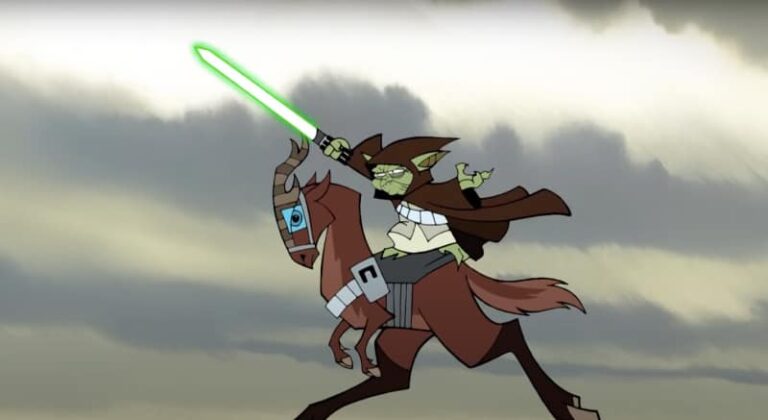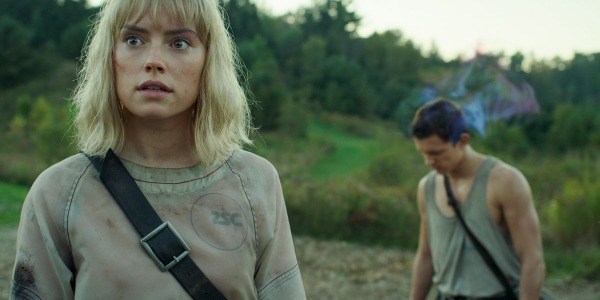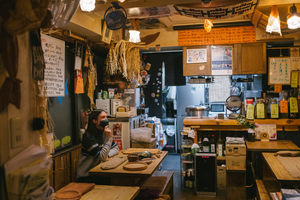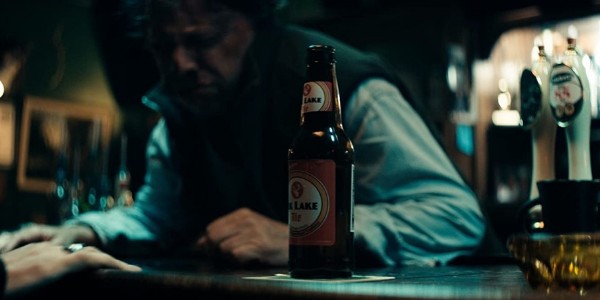THE HAUNTING Series Examines Death From Two Positions
Wherever I travel I always go on the ghost tour. Most cities have them, dusk tours of the macabre. Violent murders, ledges from which people jumped, hidden basements where illicit activities took place, the things locals have whispered about for centuries all spruced up and monetized for those passing through. It’s a fun thrill, sure, but more importantly, these stories preserve injustices and tragedies that say as much about the people living there as the items in their museums. What haunts also reveals, that’s the trick great storytellers know, and few have utilized this better in recent years than Mike Flanagan.
Whether adapting or creating his own stories, Flanagan has shown a knack for weighted horror without being shy about genre trappings. Doctor Sleep, Gerald’s Game these are not the self-conscious pieces that have given rise to the love it or hate it term elevated horror. Hell, Flanagan’s Oculus is about a haunted mirror; not exactly highbrow stuff. There’s ghosts, supernatural occurrences, twisted minds, and yes, jump scares throughout his work, and he’s smart enough to know that there’s no shame in including these, nor do they preclude him from having deep truths within his horror.
Perhaps that’s why some of the initial reactions to The Haunting of Bly Manor have been lukewarm. The follow up to his beloved The Haunting of Hill House series on Netflix (an apparent launch of The Haunting as an anthology series all its own) is a starkly different horror story, one that’s much slower and less jarringly frightening. It’s still a ghost story, it’s still full of haunted people, but their relation to the series’ central theme of death and its influence on our lives is so drastically different that the second entry can’t have as much of the big, screeching horror that makes so much of Flanagan’s work, including Hill House, a heady treat.
Hill House was able to indulge because it is a much more traditional horror story. Like so many that have come before it, it’s about accepting death as a part of life. Its characters never processed the early loss of their mother in the titular house and have been raging ever since. Their story, then, is the more hot-blooded one, the easier to fit into familiar beats. In contrast, the adults caught by Bly Manor seem to know the game if not the specific rules. They’ve taken the inevitability of death in stride and carry on, their steadiness making the narrative much less urgent. What belies their placidity, though, is the next step in our relationship with death: how do we live with it?
The horror of knowing the losses coming to us halts plenty of people in their tracks, arrests them in a life of few connections and desires. These lives are calmer than those fighting death but they’re hardly happier. It’s another trap, this complacency, another way that death can control our lives. Overcoming it is a quieter struggle, the failure to do so more chilling than terrifying, and so Bly Manor is still a horror story, but one that was told with a necessarily different tone than Hill House.
For Whom The Bell Tolls
There’s hardly a more stark difference between Hill House and Bly Manor than the characters caught in their supernatural webs. Hill House has the Crain family, specifically the five children who were terrorized by the titular house as children and have subsequently run as far from the trauma as they can. This group denies what they’ve experienced for as long as possible, fighting tooth and nail to escape their fate. The characters of Bly Manor, in contrast, are a far less lively a bunch. The gardener, chef, housekeeper, and au pair of an old English manor are seemingly less attached to their tormenting estate than the Crains, yet they are the ones who stick out the madness and, more importantly, stick together.
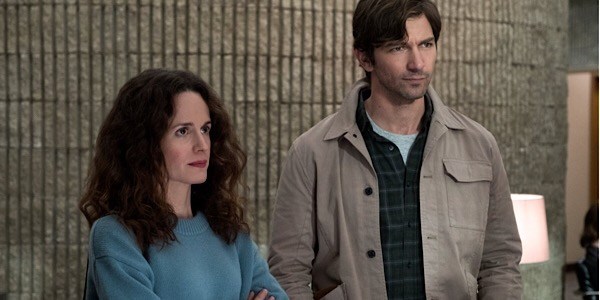
Anyone attune to storytelling would tell you that Bly Manor has a much more difficult row to hoe, needing to form connections between characters without the anchor of familial bonds. Instead, they use a couple of love stories, one that builds as the season progresses and another that simmers as it has for years. Both feed into the overarching moral that to live with death is to live in spite of it, the trajectory of each relationship showing the cost and payoff of taking the advice or not.
Hannah the housekeeper and Owen the chef are the ones that don’t. Their story is pure tragedy, a case of inopportune timing. Both are in periods of stasis, Owen having returned to Bly only to care for his dying mother and Hannah recovering from a failed marriage. They’ve loved each other for a while, it seems, but found themselves too distracted by their accumulating losses to take steps towards each other.
The fact that Hannah is dead from the moment the season begins clinches the tragedy. The whole time we’re with them they never have a chance to be together, even as we watch them flirt and care and see each other. The melancholy of this near-miss overwhelms even the reveal of Hannah’s ghostly status, the constant refrain of her memory of meeting Owen and their doomed inching towards building a life together providing the far weightier punch. They were right in front of each other but were too slow to make a move, and in reality, were already out of time.
The same mistake is not made by the gardener, Jamie, and the au pair, Dani. When Dani shows up to care for the children of the house sparks fly between the two, but both are guarded by nature and not about to hop into a relationship. They at least have a chance, though, and their will they/won’t they questioning becomes the heart of the show.
The problem is that taking the leap means they’ll have something precious to lose, a punishing prospect, particularly as the ghosts of Bly Manor close in on them. But by the time Bly Manor has its grasp on Dani and the hard choice is before the couple, the supernatural has essentially receded to a story device.
It’s an approach not dissimilar to the one used in one of my favorite books, Kazuo Ishiguro’s Never Let Me Go. That is a science fiction tale that uses a human cloning program to examine a shortened lifespan, the point being what becomes important as we face our mortality and not some dystopian fight against the system. According to Ishiguro, plenty of readers are frustrated by the receding science fiction elements, much as I would imagine, people find the last episode of Bly Manor a strangely mundane way to wrap up a ghost story. Dani and Jamie do take the plunge and live a life together knowing their time will be shortened by the ghost lurking inside Dani. But they are happy in this time, happy in a way they’ve never been before, the showstopping, crushing tragedy of their relationship striking when the ghost reappears and the two must lose everything they’ve built. The knife twist is that this is the fate of any relationship, really, with the supernatural element only there to shorten the time frame and emphasize the tragedy.
Neither couple escapes death because it is an inescapable part of life, and that’s the horror, isn’t it? That the choice before us is to either avoid truly living, and in doing so minimize both pain and joy, or to take advantage of the time we have and feel each more acutely.

The Crain kids, on the other hand, aren’t even capable of a healthy relationship. They try for most of Hill House, finding themselves in broken romances while their familial relationships are strained at best. That these fail or are failing is due to them simply not showing up, their unwillingness to confront what happened in that house having caused them to build walls so high they can’t get over them even when they must.
Steven believes there’s something so wrong with him that it should never be passed on, Shirley hides anything negative behind makeup or a stern face, Theo rejects bringing any more pain into her life than necessary, Luke loses himself in drugs, and Nell, well, she can’t even decide in which direction to run. But they’re all running, in one way or another, running so far that no one can get near enough to help.
Their isolation is the great tragedy of Hill House, their failure to show up, and help each other resulting in the death of Nell and the near extinction of the entire family. It isn’t until they stop running, or more accurately, start running towards each other and that house, that they have any chance of actually being happy.
Going to that house and each other, though, means confronting death in a way they’ve never been able to. This is their arc, getting out of the mindset that death is a looming, menacing figure, its dominance in life so monstrous that they can’t even look directly at it. This overwhelming fear, in contrast, is never present in the characters of Bly Manor. They run willingly towards death when needed, always showing up when it threatens or exacts a heavy cost, the reward being a chance to have something meaningful before it strikes a fatal blow.
The House and The Haunting
The houses and ghosts that make this anthology series feel of a piece are physical manifestations of the season’s different versions of death, the big bad that must be confronted by its characters in order to achieve some level of peace. Because the two seasons are about two very different ideas of death, these horror elements had to be presented in starkly different fashions. Bly Manor couldn’t be the intimidating figure that Hill House was because death is not an arresting feature in the lives of Jamie, Dani, Hannah, and Owen, nor could the Crains have been paired with such an indiscriminately dangerous place as Bly Manor.
For the Crains death is personal. Their mother’s passing was not natural, no matter how they’ve spun it in their heads. She was taken, snatched as if a sentient force decided to rip her from them. This kind of death marks you and seeks you out, and so it’s a presence to be feared and loathed.
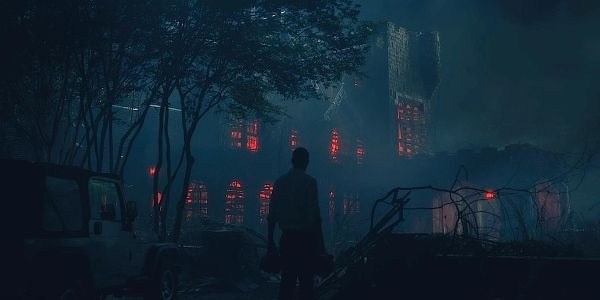
Hill House, then, is a frightening, loathsome place. Its walls rot and its ghosts are grim creatures that stalk and lure. The house itself is described as feeding on the family, and it seems throughout the series to be drawing them back, organizing, and conducting their demise. Nell, it turns out, is literally haunted by herself, a more clear example of the way death hovers over the siblings impossible to conjure up.
That makes for a good ol’ scary time, but such an active presence never would’ve worked for Bly Manor. The characters in this season have a more passive view of death, one where it is simply a part of life, and so Bly and its ghosts have a more natural feel.
Take the reason Bly became the trap it is: a woman. A regular woman, one who was strong-willed and wronged in life, but still a woman with understandable rage. She alone made Bly into a place where the dead lingers, even this effect a byproduct and not an intentional punishment.
Death at Bly is so connected to life that the ghosts who inhabit it simply continue on as they were. The gaslighter continues to gaslight, the caretaker continues to care, and the rage-filled woman who caused it all continues to rage. But even in this, the original ghost doesn’t stalk her prey. The people who come under her spell are simply in the wrong place at the wrong time, accidentally crossing her path and being swept up in her rage. So, too, does death so often come for us. Rhyme and reason go out the window and we are struck by illness or accident at inopportune moments, sometimes never seeing it coming at all.
This impersonal and ambivalent form of danger extends to the way Bly’s ghosts are represented, leaving behind the terrifying visages that populate Hill House and instead of giving us ghosts with faces that have been unsettlingly erased. This doesn’t happen immediately, the more recent converts to the dead are still recognizable. It instead occurs with the passage of time, a physical manifestation of their forgetfulness.
Time and its ravages are a pretty essential aspect to our relationship with death, particularly if one views time as linear and death as an endpoint. This is not the case in either Bly Manor or Hill House, though. Both have memories collapsing into the present and being reframed as characters grow, a strange similarity given how different these narratives are. It implies that this isn’t an effect of the houses or these characters’ brushes with the supernatural but instead a spin on some other, more salient observation.
If the vortexes of Hill House and Bly Manor represent the end of life, perhaps it’s this constant that represents life itself. Having some time, after all, is the only thing any of us are assured of. Time to run from each other and cause harm or to show up and love each other. The end comes whether we like it or not, but we have time to construct who we want to be, including how we will be remembered. And we never know how long we have to do it.
What did you think of The Haunting series? Why do you think the two seasons feel so distinct? Let us know in the comments below!
Does content like this matter to you?
Become a Member and support film journalism. Unlock access to all of Film Inquiry`s great articles. Join a community of like-minded readers who are passionate about cinema – get access to our private members Network, give back to independent filmmakers, and more.
Join now!

